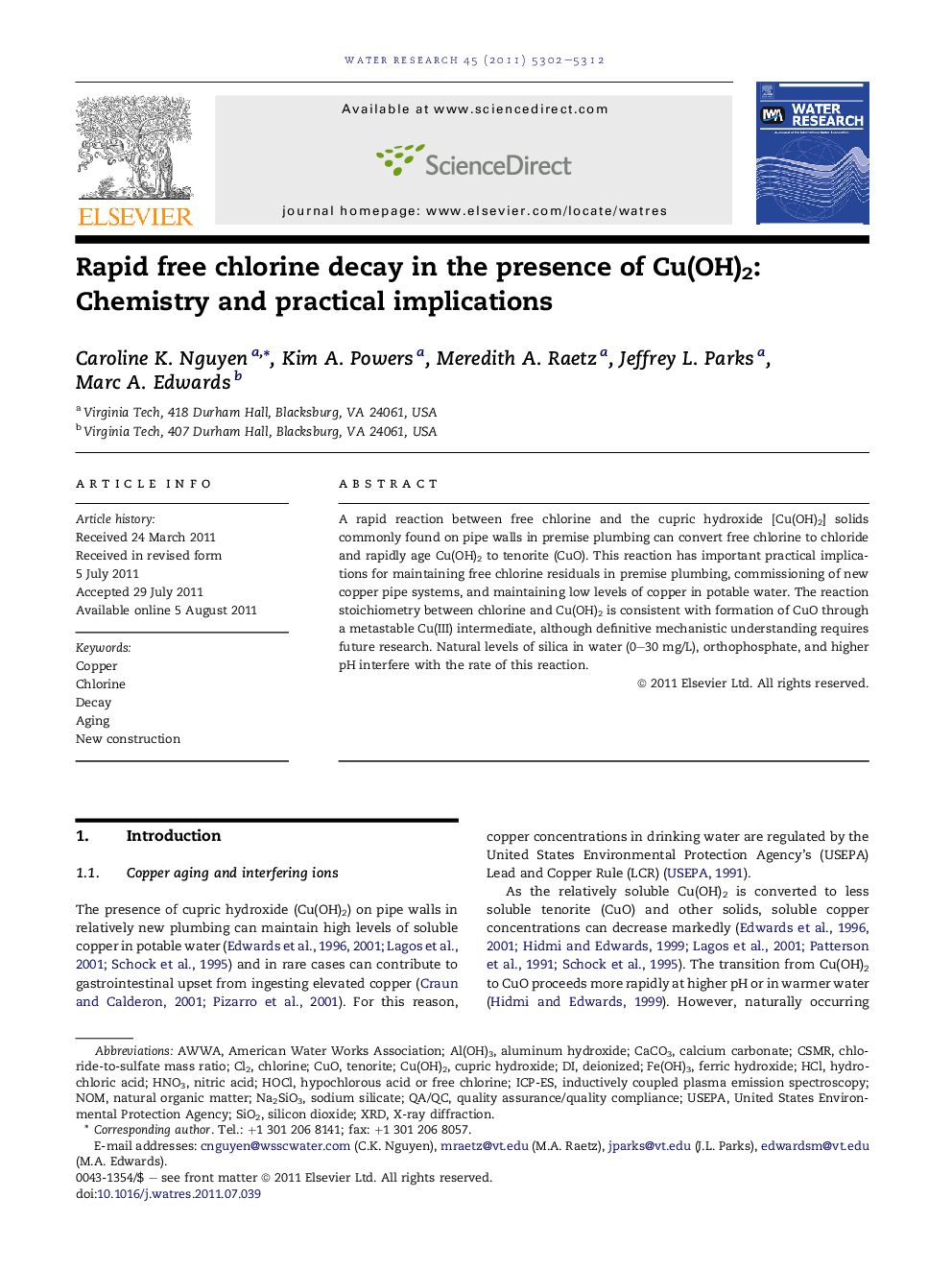| کد مقاله | کد نشریه | سال انتشار | مقاله انگلیسی | نسخه تمام متن |
|---|---|---|---|---|
| 4483099 | 1316877 | 2011 | 11 صفحه PDF | دانلود رایگان |

A rapid reaction between free chlorine and the cupric hydroxide [Cu(OH)2] solids commonly found on pipe walls in premise plumbing can convert free chlorine to chloride and rapidly age Cu(OH)2 to tenorite (CuO). This reaction has important practical implications for maintaining free chlorine residuals in premise plumbing, commissioning of new copper pipe systems, and maintaining low levels of copper in potable water. The reaction stoichiometry between chlorine and Cu(OH)2 is consistent with formation of CuO through a metastable Cu(III) intermediate, although definitive mechanistic understanding requires future research. Natural levels of silica in water (0–30 mg/L), orthophosphate, and higher pH interfere with the rate of this reaction.
► Free chlorine catalyzed Cu(OH)2 transition to CuO solids, decreasing soluble copper.
► Cu(OH)2 solid catalyzed free chlorine destruction.
► Silica sorbed to Cu(OH)2 surfaces, slowing transitions to CuO and decay of chlorine.
► Higher pH decreased rates of chlorine decay.
► Orthophosphate reduced chlorine decay and copper solubility in low alkalinity water.
Journal: Water Research - Volume 45, Issue 16, 15 October 2011, Pages 5302–5312